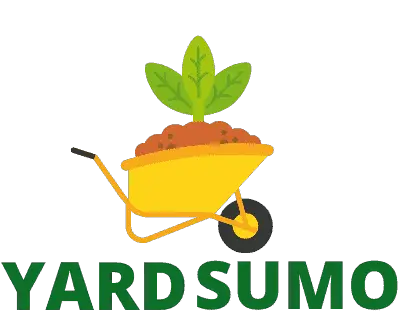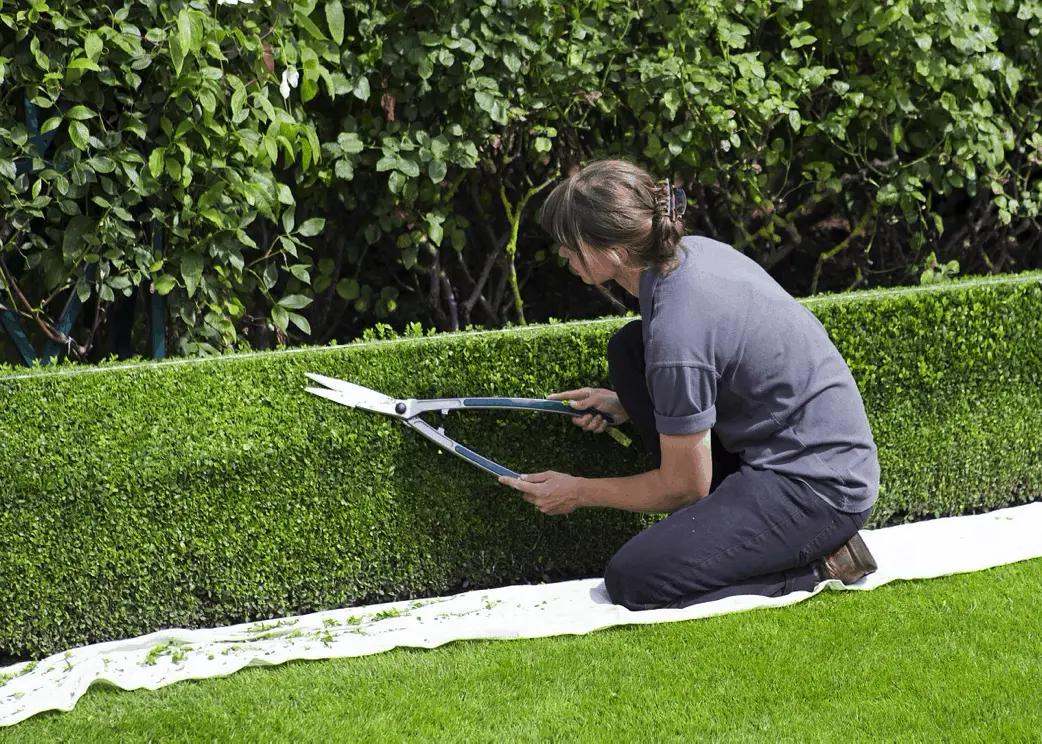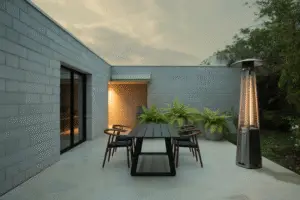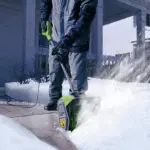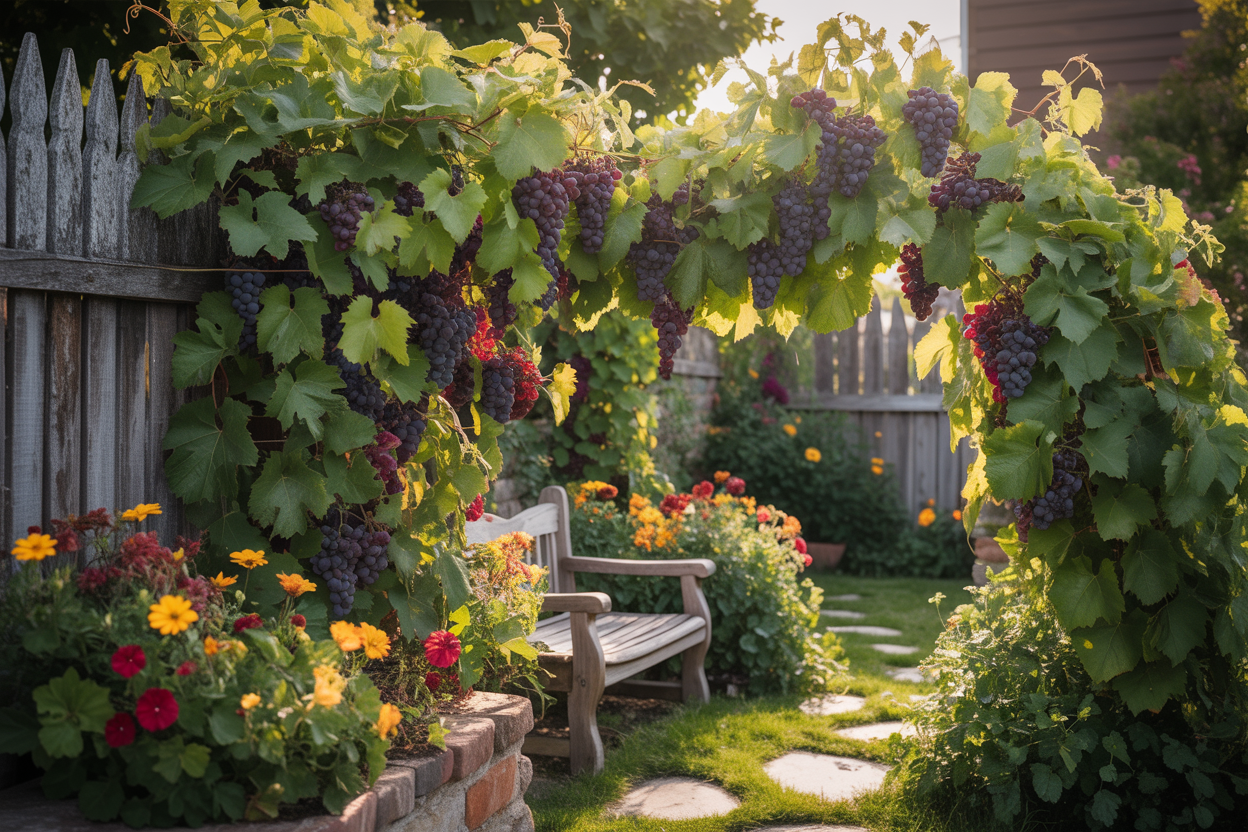Why Trim Bushes
When you trim overgrown bushes, you allow sunlight and airflow to reach more of the leaves and promote new growth. Consistent trimming will keep the foliage more compact within the bush for a more visually appealing look by keeping the hedge even and removing dead and diseased branches.
Bushes and hedges can act as a fence to separate areas in your backyard, like a garden or entertainment area.
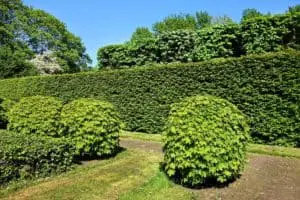
Table of Contents
Add a header to begin generating the table of contents
How to trim overgrown bushes?
Assemble all tools
The tools required will depend on the size of the bushes and the overall yard size.
- Safety glasses and gloves
- For small hedges, manual hedge scissors are recommended. Check that they are rust free and sharp
- For larger hedges, electric or motorized trimmers will make trimming easier
- Long extension cord for electric hedge trimmers
- Small hand pruning shears are great for smaller branches
- A tarp to make clean up easier
- Wooden stakes, hammer, and twine to create a guideline to cut along the bushes
Now set the outline to make sure you trim the fence neatly and evenly
To set the outline, hammer stakes at each corner of the hedge. Take a stake and tie the rope a few inches off the ground. Place that rope on another stake at the end of the hedge and tie it to the same level.
Do the same for the upper and the other side. For the upper part, keep the string a few inches from the top so that you do not trim too close to the branches. The rope will be a visual guide while your trimming to keep everything even.
When trimming the hedge, create a beautiful shape
Use wooden stakes as a finishing guide for the top and sides of the hedges. Cut off all the stems and leaves that stick out past the twine. Keeping the top of the bushes trimmed in a more narrow shape allows sunlight to reach the lower branches.
For snowy places, give the hedge a sloped or rounded top. In this way, your hedge will be able to shed snow easily.
When should overgrown bushes be trimmed?
Identify bushes that need to be trimmed. For most bushes, the farther they are cut, the fewer they will tilt toward the center. Decide how far to cut them, and remember that they will grow again. Some types will take longer than others.
It will also depend on which season it is and how much rain or water the bushes have. Determine what shape they should be. Ornamental shrubs can be trimmed back to round or square. The natural shape of most bushes looks good. Please consult gardening books or your local nursery for ideas.
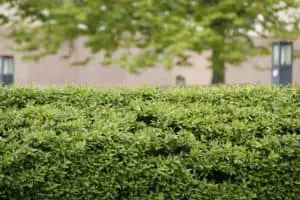
Pick up any rubbish or small hard objects such as pine cones from the yard. Please put them in the trash can or compost and remove any string lights or cordage that may be on the bushes. To protect yourself, please send any children or pets indoors.
Wearing safety glasses is one of the most important things you can do: long pants, long-sleeved shirts, and work gloves. Wearing a hat can provide additional head protection.
Mechanical Hedge Trimmer
Check the hedge trimmer before use. Ensure that the equipment is in good shape and that all parts are in operation, cutting blades are sharp and not rusted.
If it is a gasoline-powered model, please refer to the user manual for the correct fuel ratio. Use a mixture of fresh gasoline and oil. Stale gas will produce smoke and might damage the two cycle motor.
Electric Hedge Trimmer
For electric hedge trimmers, check the power cord. Please make sure there are no cuts, cracks, or breaks in it.
If necessary, use an extension cord. A good tip is if the distance from the power supply to the hedge area is long, tie the power cord into a very loose knot before connecting the two plugs to prevent pulling them apart.
Make sure you have enough cord length to move freely while you trim the overgrown bushes. Be aware of where the electrical cord is while trimming to avoid cutting the cord.
Use an electric hedge trimmer to cut off all overgrown bushes. Conduct a preliminary survey of all hedges, and then estimate the hedges that need the most attention. Use a guideline to keep the trim line even and make the height and shape as uniform as possible. Finish by pulling out any weeds growing under the bush from the roots.
How to trim overgrown bushes
Start with the least obvious bushes. Remove the small pieces at a time to ensure the height. Move slowly through the bushes so that each cut is even with the last. Use smaller sweeps. Note the thickness of the branch thickness on the larger bushes.
For hedge trimmers, they may be too thick. Step back from the bushes occasionally to check progress. When it looks more like a bush and less like something in the jungle, it’s done. Move from one position to another until all sides are even and trimmed back evenly.
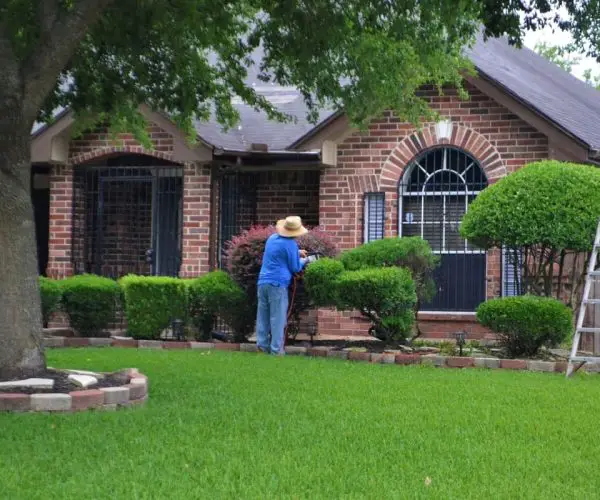
Keep the hedge in good shape and fullness
Trimming hedges and. 90-degree angles give the hedge a uniform and clean look. When pruning, always keep the hedge in good shape and fullness.
Prune deciduous hedges at the end of winter and when dormant again in summer. Trim bushes in late spring and mid-summer to late summer for the new growth of overgrown bushes. Try and avoid cutting into old, established wood. This older wood might not grow new branches.
Make clean up a breeze
Put on work gloves and start moving the debris into a pile. Use a rake or leaf blower to lighter debris and make the job go faster. Please follow your local garbage disposal guidelines to decide how to dispose of garbage.
It can be used for composting or placed on the roadside for organic waste collection. Some nurseries will collect brushes and turn them into mulch.
Pick up any large pieces from the yard as needed. Do not pile grass on the lawn or plant bed. Using a tarp will make cleaning up easier. Put away all tools and equipment used.
As a final step, give your hedges a light watering to help them grow more foliage.
